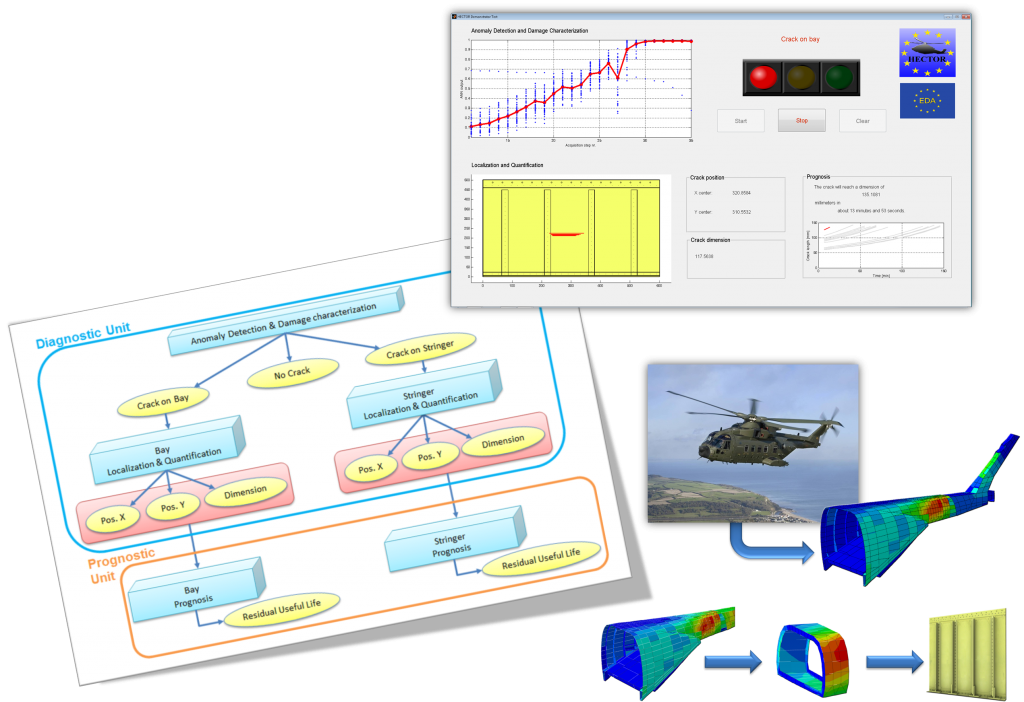Helicopter fuselage crack monitoring and prognosis
through on-board sensor network 
Funding programme: EDA European Defence Agency
Start – end year: 2010 – 2011
Partnership
Politecnico di Milano, Dip.to di Meccanica (coordinator) Italy
Agusta Westland S.p.A. – Italy
Vitrociset S.p.A. – Italy
SINTEF ICT – Norway
University of Zilina, Dept. of Telecommunication and Multimedia – Slovakia
AGH University of Science and Technology, Dept. of Telecommunications – Polony
LTSM-UP University of Patras, Dept. of Mechanical and Aeronautical Engineering, Laboratory of Technology & Strength of Materials – Greece
Consorzio Milano Ricerche – Italy
The project
The main purpose of the project is to propose modelling techniques for the analysis of multiple sensors in producing a unified and comprehensive methods for identification, monitoring and prognosis of potential damages (like cracks) in the fuselage of a helicopter. This goal is to be achieved through the combined use of advanced models for the assessment of the state of stress in the system and the identification of likely areas of nucleation and growth of cracks, and the use of a network of on-board sensors of last generation (Comparative Vacuum Monitoring, Optical Fibre Sensors, Crack Propagation Gauges, etc). It will be mainly addressed the improvement of the fuselage modelling methodologies and there will be opportunity to include techniques in the area of computational sensor data analysis, event diagnosis and prognosis.
Particular attention will be also paid to methods to elaborate the sensor network data with the purpose to create a reliable and robust system for on-line fuselage health monitoring.
Thus the final research aim is to obtain a reliable method to assess the damage accumulated in the fuselage by means of an on-line and advanced prognostic models that allow the definition in real time of a plan for periodic and special inspections.

The results, based on the methodology described above, could be applied on a model of military helicopter. Concerning military applications, the project focuses on improvement of four key factors using the proposed SHM system:
- safety;
- reliability;
- performance;
- reduction of maintenance cost of helicopters.
These issues are extremely important in military scenario where hostile environment and accidental load play an important role. In addition, considering the cost of a new machine and thus the possibility to perform life extension program of existing machine, SHM can improve life of ageing airframe without reduce safety.
Milano Ricerche is involved along the tasks of:
- Development of novelty algorithms for sensor data analysis applied to SHM, diagnostic and prognostic based.
- Design of the sensor network data modelling for SHM, focussing on integration and fusion of sensor data.
- Architectural design of the wireless sensor network, for the issues that concern the integration of multiple sensor data into a centralized point for their analysis.
